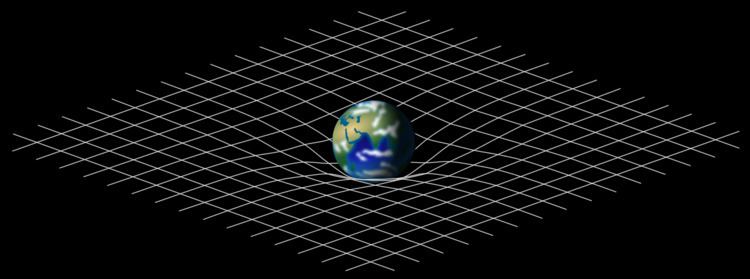 | ||
The Taub–NUT metric (/tɑːb nʌt/ or /tɑːb ɛnjuːˈtiː/) is an exact solution to Einstein's equations, a cosmological model formulated in the framework of general relativity.
The Taub–NUT space was found by Abraham Haskel Taub (1951), and extended to a larger manifold by E. Newman, L. Tamburino, and T. Unti (1963), whose initials form the "NUT" of "Taub–NUT".
Taub's solution is an empty space solution of Einstein's equations with topology R×S3 and metric
where
and m and l are positive constants.
Taub's metric has coordinate singularities at
